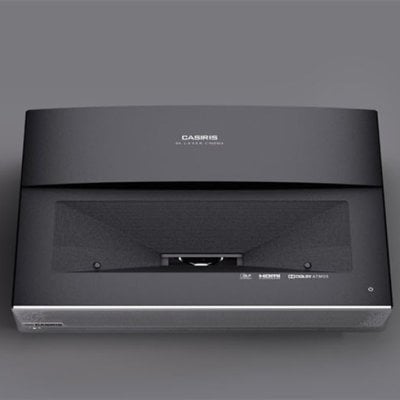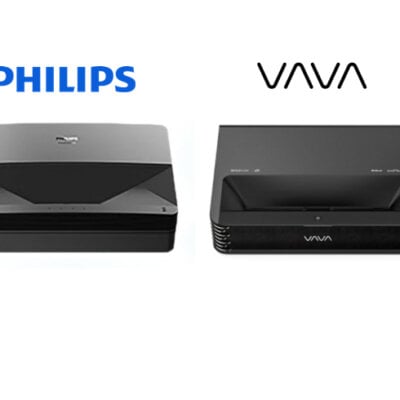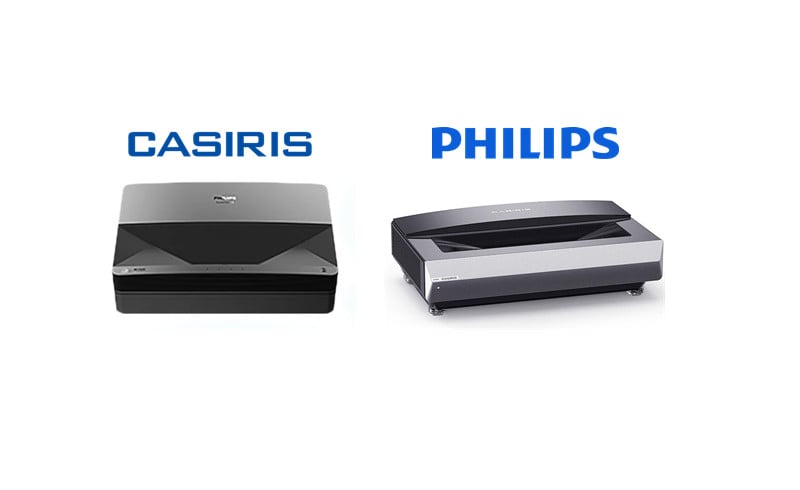
Philips Screeneo U5 and CASIRIS A6 are both hot UST (Ultra Short Throw) projectors in the US market. What are the differences between the two projectors? Which is a good choice for home theater?
In this guide, we will compare the two UST laser projectors side by side, helping you to know the differences between them.
Philips Screeneo U5 vs CASIRIS A6
Overview
Through the side-by-side comparison of the two projectors below, we can safely conclude that the two projectors have similar configurations in terms of image resolution and system.
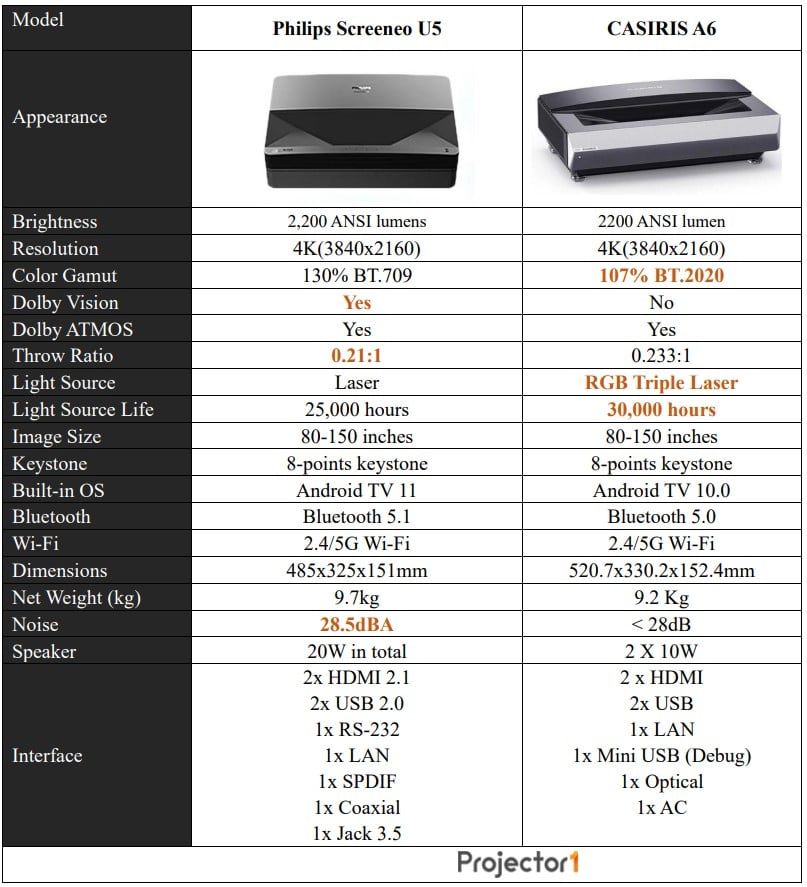
In the following part, we will compare the two projectors in detail.
Appearance

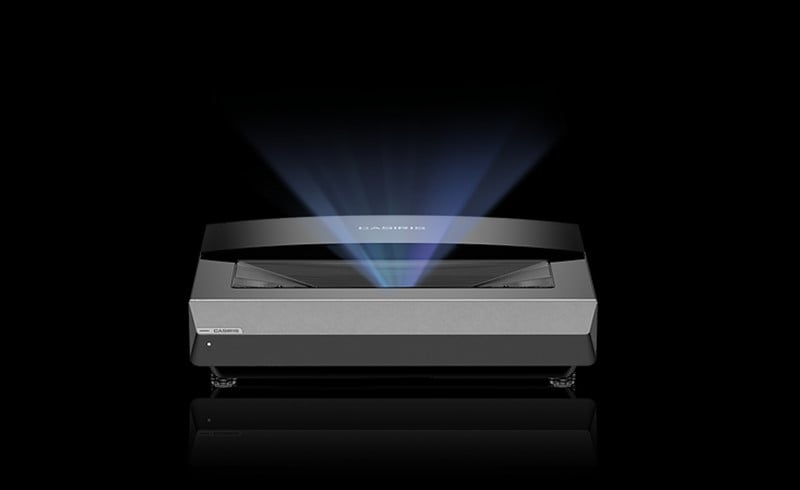
As for the design, the two projectors both adopt a simple and elegant style. In terms of color, they have similar silver-grey color and bring a futuristic style. As for dimensions, Philips Screeneo U5 measures 485x325x151mm while CASIRIS A6 measures 520.7×330.2×152.4mm. As for weight, CASIRIS A6 is slightly lighter than Philips Screeneo U5.
CASIRIS A6 has adjustable pads at the bottom of the projector to adjust the height of the projector so that you can fit the image to the screen conveniently.
They both have an eye-catching logo on the upper side of the top panel, and the interfaces are both located at the back of the projector.
Light Source
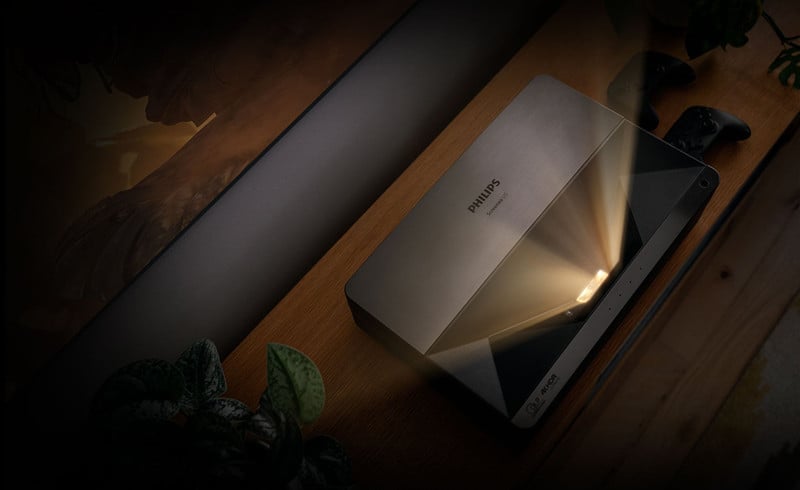
Philips Screeneo U5 and CASIRIS A6 are both laser projectors, but they are different in terms of laser types. Philips Screeneo U5 adopts a common laser as the light source and has a lamp life of 25,000 hours while CASIRIS A6 adopts RGB triple laser as the light source and has a longer lamp life of 30,000 hours. The longer the lamp life, the long time you can use the projector without changing the light source for the projector.
Compared with a single laser phosphor, the triple laser performs better in terms of color coverage. That is to say, the triple laser has better color performance in terms of the projection image.
Image
Philips Screeneo U5 and CASIRIS A6 have the same 4K resolution and the same 2,200 lumens. That is to say, the two projectors have the same resolution and brightness. The brightness is pretty good for environment with no strong ambient light, but you may need to close the curtain when there is strong sunlight.
They also have the same image size of 80-150 inches. The image size is bigger than most TV sets on the market.
The two projectors both support an 8-point keystone and electric focus, making image adjustment quick and convenient.
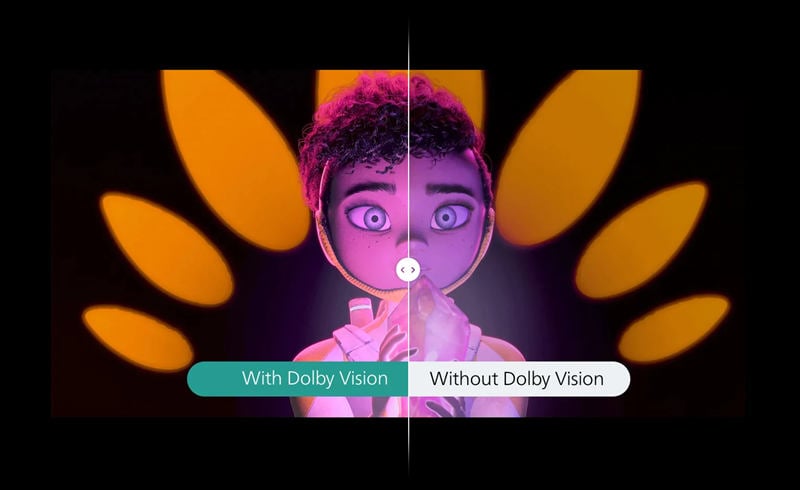
Regarding image certifications, Philips Screeneo U5 supports Dolby Vision while CASIRIS A6 doesn’t. Dolby Vision is a trendy tech that can improve the image contrast and image dark details effectively to improve the viewing effect.
Throw Ratio
The throw ratio is a core indicator for a UST projector. Philips Screeneo U5 has a throw ratio of 0.21:1, shorter than CASIRIS A6’s 0.233:1. It requires 18.8cm for Philips Screeneo U5 to project a 100-inch screen while it requires 20.9cm for CASIRIS A6 to project the same screen size.
Compared with common projectors with long throws, the UST projector can project a giant screen within an extremely short distance, and therefore they save more space. You can even set up the projector on the TV cabinet just like your TV set. More importantly, as the throw distance is short, the projection image won’t be affected by walking people.
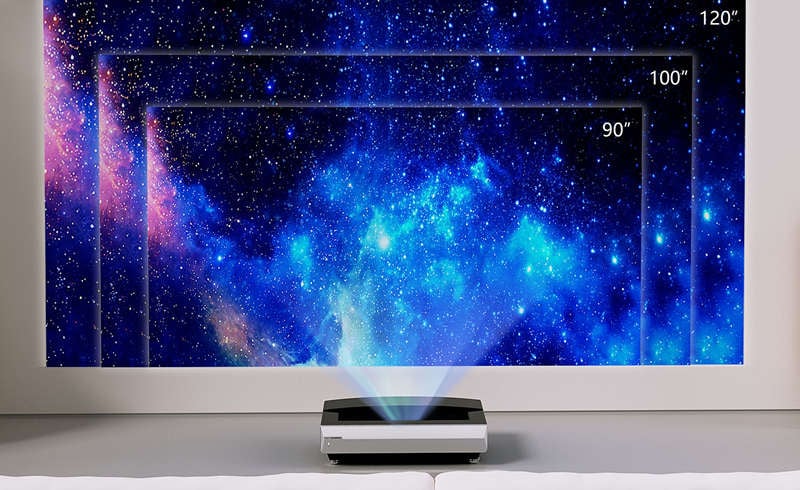
| Philips Screeneo U5 | CASIRIS A6 | |
| Throw Ratio | 0.21:1 | 0.233:1 |
| Distance for 100” | 8.8cm | 20.9cm |
System
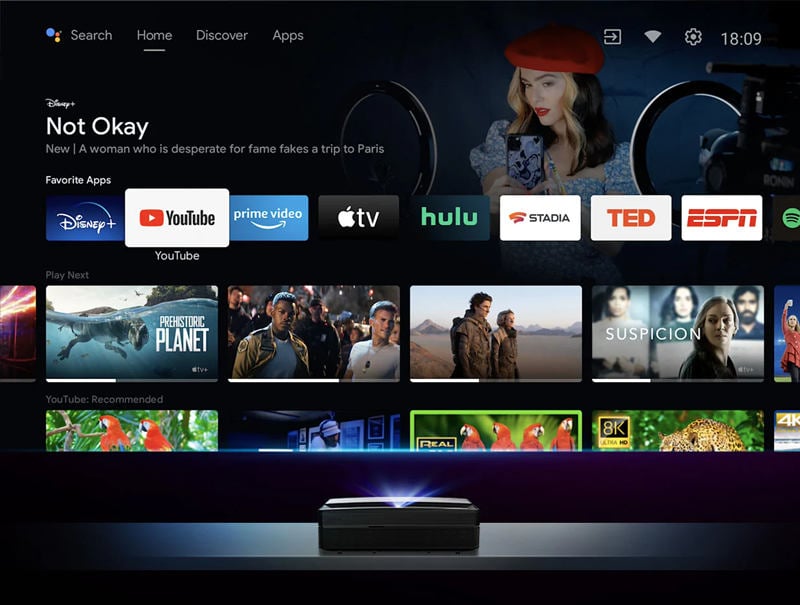
For the system, the two UST laser projectors are powered by Android TV, which has built-in Google services. Philips Screeneo U5 is powered by Android TV 11 while CASIRIS A6 is powered by Android TV 10.
The two projectors both have built-in Google Play store and you can download various more than 7,000 apps in the app store. With the Android TV system, you can stream content conveniently without connecting the projector to external devices.
Regarding CPU, Philips Screeneo U5 and CASIRIS A6 both carry on MT9629. But in terms of memory, the Philips projector has 2G RAM and 32G ROM while the CASIRIS A6 has 3G and 32G. In other words, the CASIRIS projector has better response and processing capacity.
Nowadays, 3D has been a necessary function for projectors, the two projectors both support 3D and enable users to play 3D videos with matched 3D glasses.
| Philips Screeneo U5 | CASIRIS A6 | |
| CPU | MT9629 | MT9629 |
| Memory | 2G RAM+32G ROM | 3G RAM + 32G ROM |
| 3D | Yes | Yes |
Smart Features
The two projectors are both powerful in terms of smart features, including 3D mode and Chromecast.
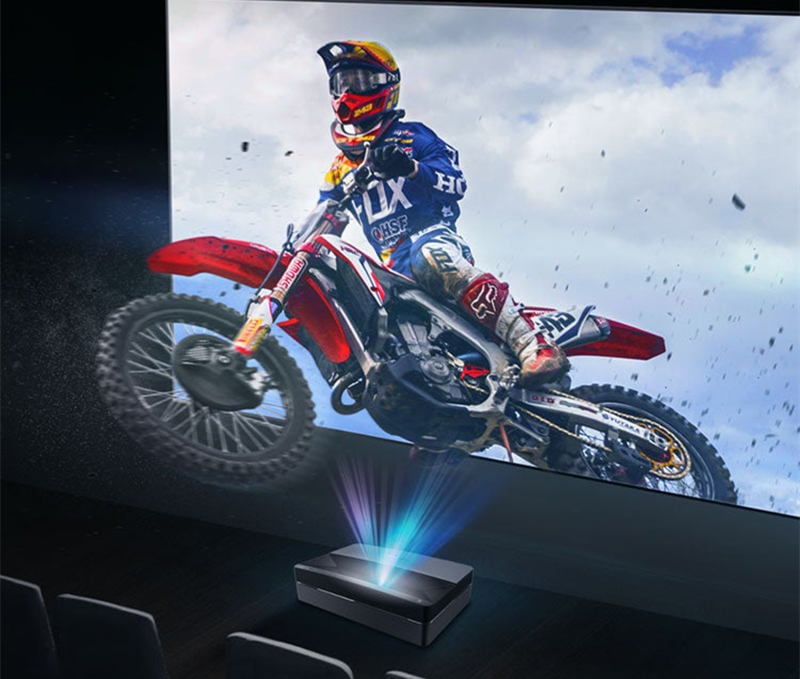
What makes Philips Screeneo U5 different is the projector has ALLM game mode, which is useful for playing games.
| Philips Screeneo U5 | CASIRIS A6 | |
| 3D | Yes | Yes |
| ALLM Game Mode | Yes | No |
| Chromecast | Yes | Yes |
Connectivity
The two projectors both support Wi-Fi and Bluetooth, but the Philips projector has a new version. As for wired connectivity, Philips Screeneo U5 has more audio interfaces than CASIRIS A6.


HDMI interface can be used to connect the projector to external devices, such as Rokus, computers, TV boxes, game consoles, etc. The two projectors have two HDMI interfaces and can satisfy daily needs. Regarding the audio interface, Philips Screeneo U5 is better as it has a SPDIF interface and a Coaxial interface to connect the projector to other powerful audio devices.
Audio
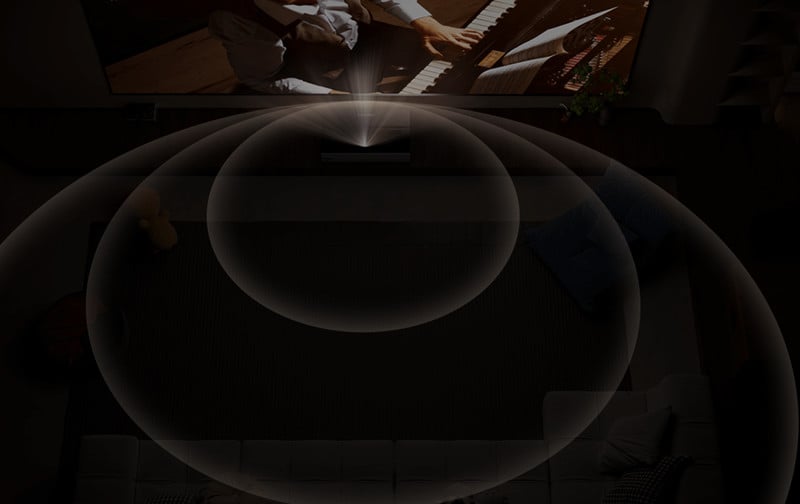
The two laser projectors both have built-in speakers of 20W in total. The noises produced by the Philips Screeneo U5 and CASIRIS A6 are approximated. On the whole, their audio performance is similar. They both support Dolby Atmos and DTS, producing surrounding and pleasant audio.
As for noise, the noise produced by the two projectors is about 28dB under normal conditions, which is acceptable and common for home theater projectors.
| Philips Screeneo U5 | CASIRIS A6 | |
| Noise | 28.5dBA | < 28dB |
| Speaker | 20W in total | 2 X 10W |
| Audio | Dolby Atmos DTS HD Dolby Digital 5.1 | Dolby Atmos DTS HD Dolby Digital Plus |
You may be interested in Philips Screeneo U5 Review.
Price
Philips Screeneo U5 is priced at $3,499 while Casiris A6 has a retail price of $3,199. Their pricing is close and they both have a campaign on Indiegogo.
The Indiegogo price of Philips Screeneo U5 is about $1,754 while Casiris A6 has a discounted price of $2,299 (Now is closed). Casiris A6 now has a campaign price of $2,299 on its official website.
That is to say, the Philips Screeneo U5 has a higher retail price but it has a lower campaign price compared with Casiris A6.
Pros and Cons
Philips Screeneo U5
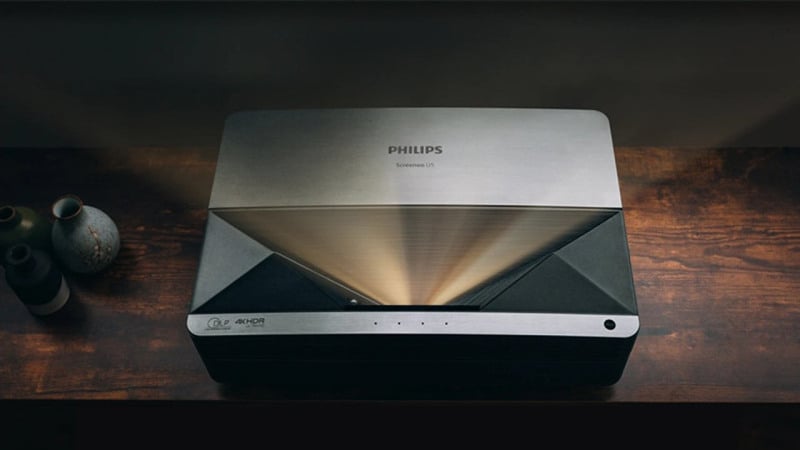
Pros
- Shorter Throw
- Dolby Vision
- 4K resolution
- Android TV
Cons
- Poor Color Performance
CASIRIS A6
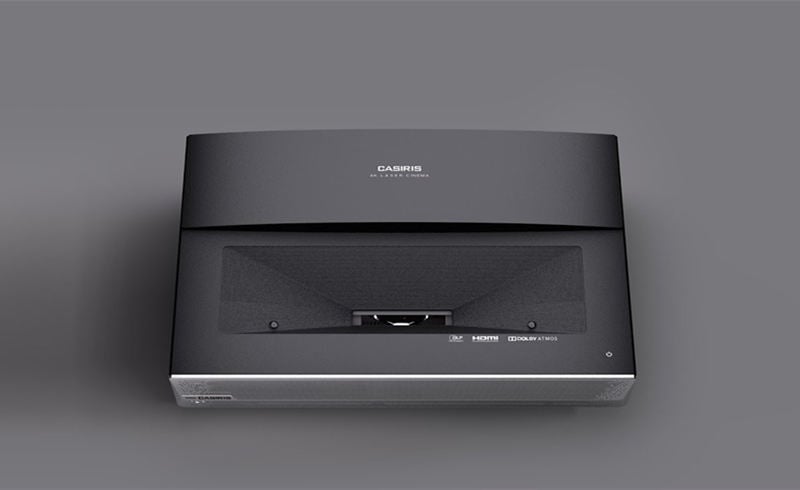
Pros
- Triple Laser
- 3G RAM
- Longer Lamp Life
- Good Color Performance
- Dolby Atmos
Cons
- No Dolby Vision
- The input lag of 35ms
Conclusion
Philips Screeneo U5 and CASIRIS A6 have many things in common, for example, image quality and audio performance. Philips Screeneo U5 is better in short throw ratio and game modes, while CASIRIS A6 is better in terms of long lamp life, better color performance, and larger RAM.
Related Posts



